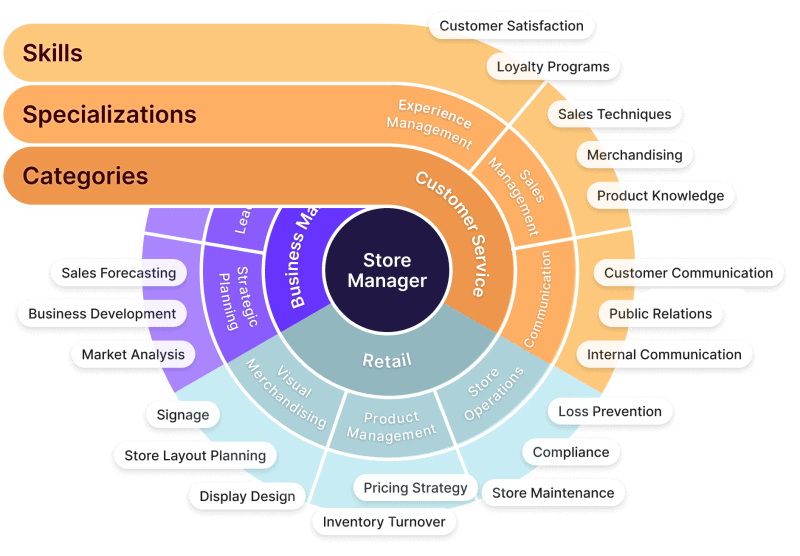Probably the worst part of being an entrepreneur is having to let your people go. It’s been almost 15 years since I’ve done it for the first time and it never gets easier.
The first time I had to do it, I failed in a way you can’t even imagine: I ended up changing my mind after firing someone and asking them to come back. What a disaster.
Over the years, as my career evolved, I had to do it again and learned from others how to handle this professionally, with the respect and sensitivity it requires. As I’ve seen more and more people losing their jobs – and managers having to communicate this – I want to share some of the lessons I’ve learned in my career. They have shaped the person and entrepreneur I am today, teaching me not only the importance of managing this well but also the criticality of doing right by the people who remain on your team. For those who are losing their jobs, I wrote a few articles at the beginning of the year; one I particularly like is about how to manage yourself while searching for a new job.
Okay, how many times did I have to do this? More than I would have liked. Cloud Academy, my second company, had over 250 people at its peak, and over 10+ years, we probably hired more than 400 people worldwide. I was involved in several of these hires and in many layoffs or terminations (a term that might sound particularly harsh to my European friends). Needless to say, several hires didn’t work out, some due to our growth mistakes or bad years that forced us to resize the business. Every single person we had to let go taught me a lot, and over time, I’ve learned how important it is to manage this conversation – and critical step – well.
I also like to think that the way you part ways with your team members says a lot about your company’s culture and direction. To put it better: poor leaders tend to be pretty bad at this, while great leaders spend a ton of time preparing for it.
Let me list four things I’ve learned the hard way in my career, things that people will remember. I made these mistakes and have seen their consequences.
-
Rule #1: Own it, you have to do it. Don’t send someone else!
Never let someone else in your team or company do the talking for you. People want to hear bad news from their manager, not from someone they’ve never talked to. This news is such a shock that most people will not tolerate hearing it from a stranger. I usually had my HR manager join me (and my co-founder at times when we had fewer than 50-60 employees), but I was always the one doing all the talking. While you might not perceive the difference, your people will appreciate that you did it and owned it. Don’t make it long or full of unnecessary details, as this is not the type of meeting that requires it. However, ensure you are authentic and lead the conversation.
It’s also critical that you take responsibility for this decision. Sometimes it’s easy to blame someone else in the organization: it doesn’t matter to the person in front of you. She is having a bad day, the last thing she wants is to have someone not taking responsibility for it.
I know that corporations might not follow these rules, but even in large companies, you will find great people and managers who want to do the right thing.
-
Rule #2: Be kind and respectful and don’t lie to your people
As I said, you shouldn’t go into excessive details, but you should also avoid lying. Layoffs happen for several reasons: often, the company might have over-hired or failed to achieve its financial goals. If it’s a termination, honesty is even more important. Be open about the reasons behind your decision (in the case of a termination, it shouldn’t come as a surprise to the person), as this will go a long way with your team. I have been in situations where the conversation became heated: you must stay calm and respectful no matter what. I always believed that in every termination, there is usually a 50/50 responsibility split between the employee and the company.
It’s easy to think it’s solely your employee’s fault, but that’s rarely true. Remembering this will help you approach the conversation with transparency and respect.
-
Rule #3: Be open with your team and explain why you had to do it
I am talking about those situations where people disappear, but leadership never talks about it. It’s a terrible mistake that impacts the people who stay with you more than anything else. People will find out about the news in the strangest ways (last week, someone told me they had a meeting scheduled, and the other person had been fired), and they will immediately think about the lack of transparency and respect in non-communication. As soon as you are done with your conversations, you must talk to your team and explain what happened and why, ensuring they understand why your company had to take these actions. Do not do that with your corporate blog: that might happen later, but your people need to see you communicating this, in person ideally. If this is the result of a strategic mistake or a reorganization, you must explain what the company will do differently moving forward and offer details on your strategy for it.
Every single layoff is followed by a big morale drop for the team. The way you manage things it’s critical to make sure your people don’t live in that limbo for too long.
Ask for help to people in your network
If you are going through something like this at the moment and you are not sure about what to do: ask for help. Reach out to your network, ideally to people that are HR professionals or executives that have experience and ask them how they would conduct this conversation. It’s better than trying to do it without knowing exactly what to do and what to say. People that have done it before know exactly how difficult and brutal this is and they will be able to give you very specific suggestions on how to handle yourself.
As I said, following these rules won’t make it easier, but it will go a long way for your people – both those who stayed and those who left.
I hope this is helpful, and feel free to reach out if you find yourself going through this and don’t know exactly how to do it. Feel free to reach out on LinkedIn.
January 17, 2024


